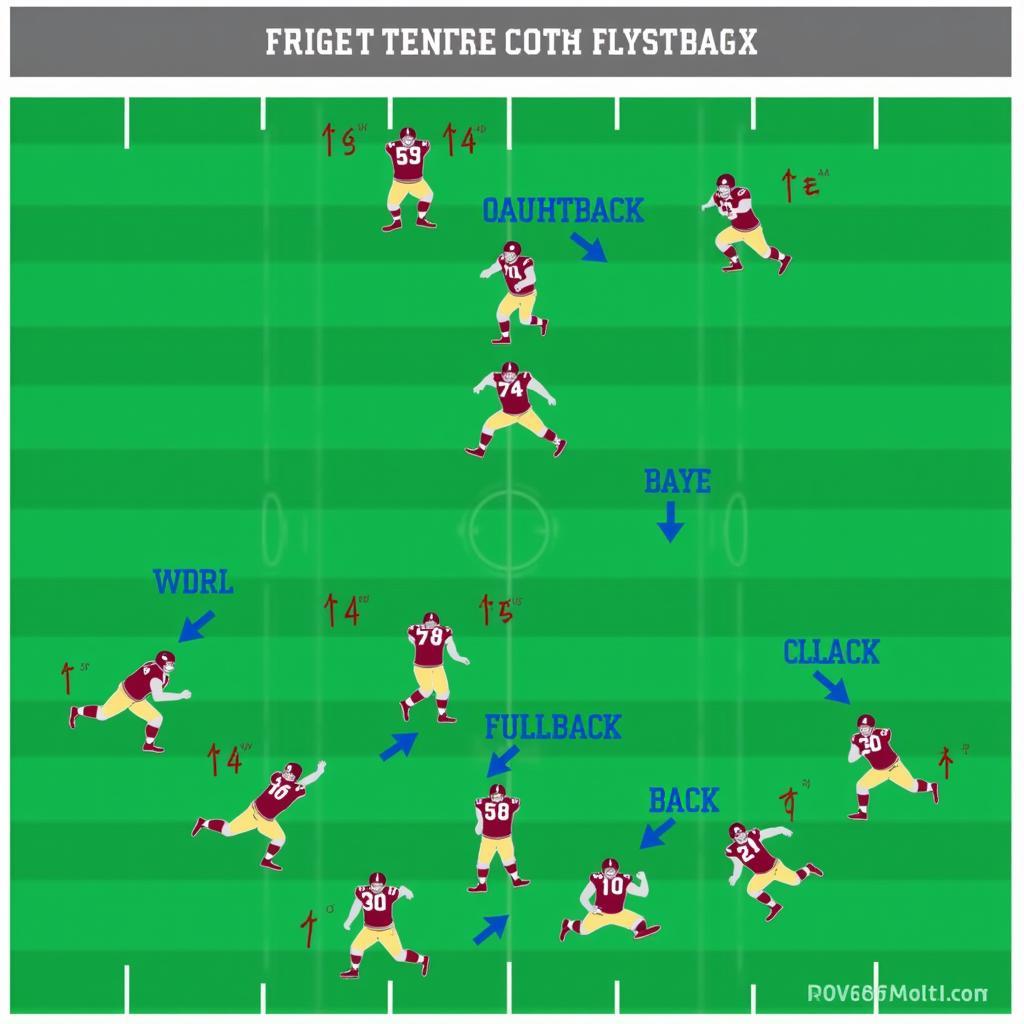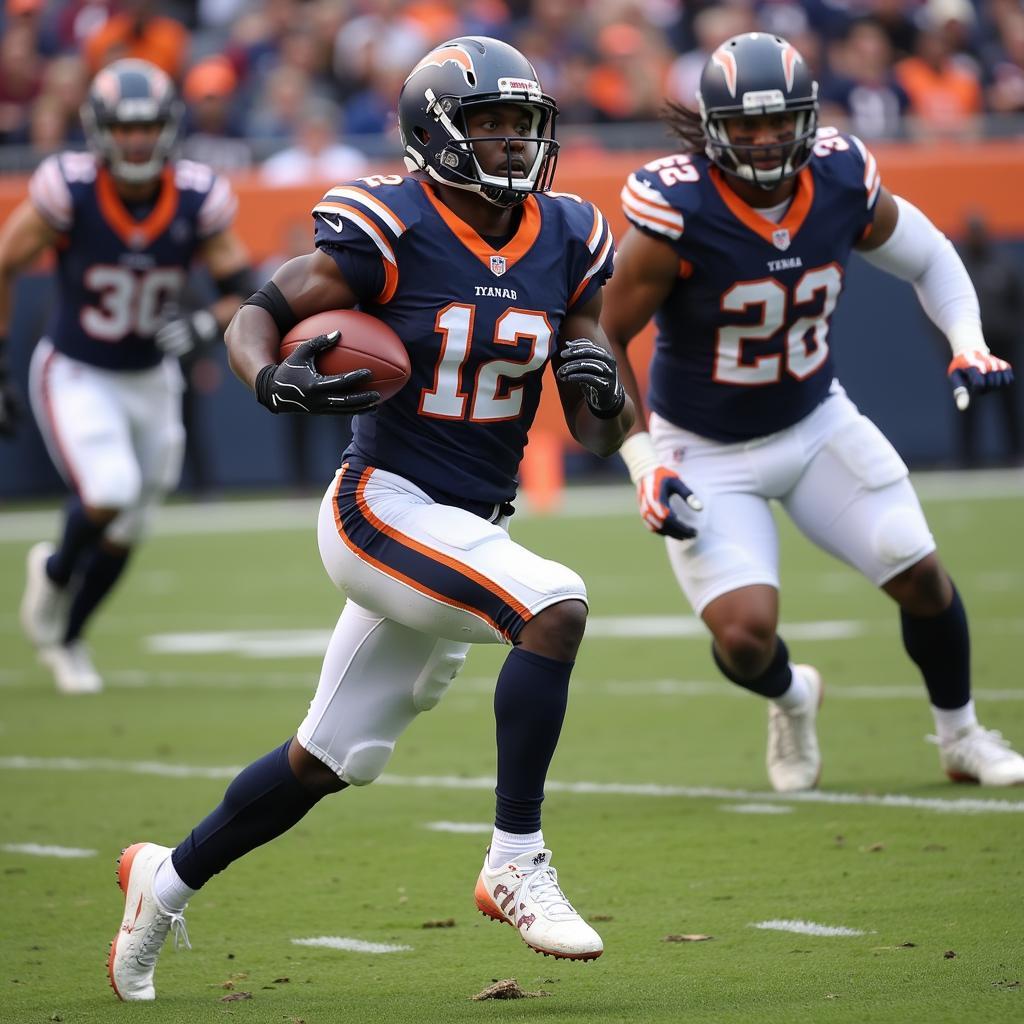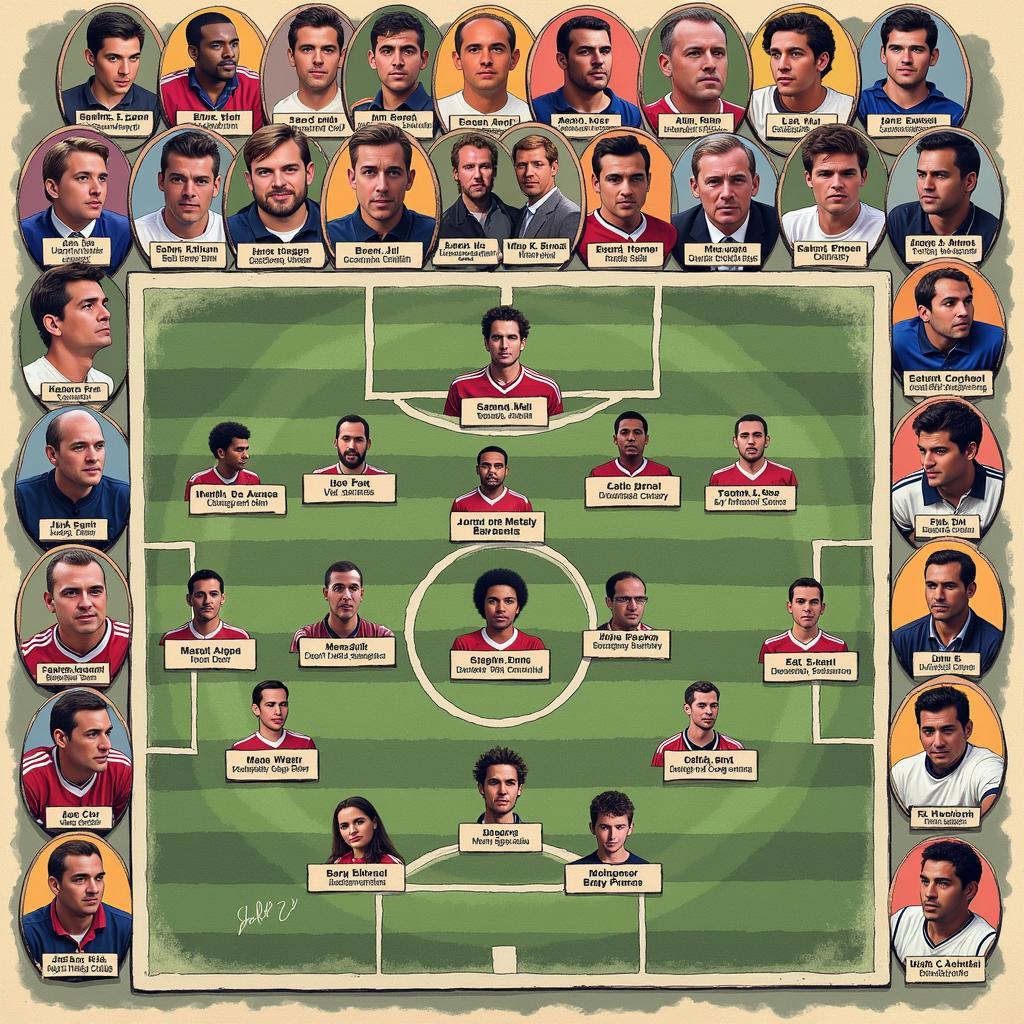Decoding the Triple Option Formation in Football
October 20, 2024The Triple Option Formation is a fascinating offensive strategy in football, known for its potential for big plays and its ability to keep defenses guessing. Let’s dive into the intricacies of this formation and explore why it remains a captivating element of the game.
 Diagram of a Typical Triple Option Formation
Diagram of a Typical Triple Option Formation
The Basics of the Triple Option Formation
At its core, the triple option formation presents the offense with three distinct options on a single play, hence the name. These options typically involve:
- The Quarterback (QB) Keeping the Ball: The QB, after receiving the snap, can decide to keep the ball and run with it himself. This decision hinges on the defensive end’s (DE) reaction. If the DE crashes towards the fullback, the QB keeps the ball.
- The Fullback (FB) Dive: The FB receives a handoff from the QB, aiming to plunge through the middle of the line for a short but potentially crucial gain. This option often serves as the foundation of the triple option, forcing the defense to respect the inside run.
- The Pitch to the Running Back (RB): If the QB decides against keeping the ball and notices the linebacker (LB) committing to stopping the FB, he has the option to pitch the ball to the trailing RB. The RB, with open space to exploit, can then try to outrun the remaining defenders to the edge.
The Allure of Unpredictability
One of the most compelling aspects of the triple option formation is its element of surprise. The defense is constantly kept on its toes, unsure of which option the offense will choose. This uncertainty forces the defense to account for all possibilities, creating gaps and vulnerabilities that a well-executed triple option offense can exploit.
Mastering the Triple Option: More Than Just a Formation
Successfully running the triple option formation requires a unique set of skills from the players involved:
- The QB: The QB needs to be decisive, agile, and possess excellent ball-handling abilities. Reading the defense in real-time and making split-second decisions are crucial for the success of the play.
- The FB: The FB is often the unsung hero of the triple option. He needs to be powerful, fearless, and willing to take on the brunt of the defensive line.
- The RB: The RB needs speed, agility, and the vision to find running lanes. His role is crucial in turning a potentially average gain into a big play.
 Yamal Executes a Picture-Perfect Triple Option Play, Leaving Defenders in the Dust
Yamal Executes a Picture-Perfect Triple Option Play, Leaving Defenders in the Dust
The Triple Option: A Timeless Yet Evolving Strategy
The triple option formation has a rich history in football. While its popularity has fluctuated over the years, it remains a potent offensive weapon, particularly at the high school and college levels.
Teams like the Nebraska Cornhuskers, under legendary coach Tom Osborne, achieved remarkable success employing the triple option in the 1990s. Their dominance showcased the effectiveness of this formation when executed with precision and a deep understanding of its nuances.
Today, while not as prevalent in the NFL, variations of the triple option continue to surface, demonstrating its adaptability and enduring relevance in the ever-evolving landscape of football strategy.
Beyond the X’s and O’s: The Beauty of the Triple Option
Beyond its strategic complexities, the triple option formation embodies a certain beauty and poetry in motion. The synchronized movements of the players, the split-second decisions, and the potential for breathtaking plays make it a spectacle to behold.
For football purists and casual fans alike, the triple option, with its history, its challenges, and its capacity for generating electrifying moments, remains an enduring and captivating element of the sport.
FAQs about the Triple Option Formation
1. What makes the triple option formation so difficult to defend?
The triple option’s unpredictability is its greatest strength. Defenses must account for three potential ball carriers on every play, making it challenging to assign and maintain defensive responsibilities.
2. Is the triple option formation only effective at certain levels of football?
While more common in high school and college football, variations of the triple option can be successful at higher levels when executed well. The key is having the right personnel and a deep understanding of the system.
3. What are some variations of the triple option formation?
Common variations include the speed option, where the QB reads the outside linebacker instead of the DE, and the inverted veer, which features a running QB and emphasizes speed over power.
Discover More About Football Strategy
Interested in exploring other offensive schemes and playbook insights? Check out these resources:
 The Evolution of the Triple Option Through the Decades
The Evolution of the Triple Option Through the Decades
Need More Football Insights?
Have a question about the triple option formation or any other football topic? We’re here to help!
Contact us:
- Phone: 0915117113
- Email: [email protected]
- Address: Tổ 3 Kp Bình An, Phú Thương, Việt Nam, Bình Phước 830000, Việt Nam.
Our team is available 24/7 to assist you.